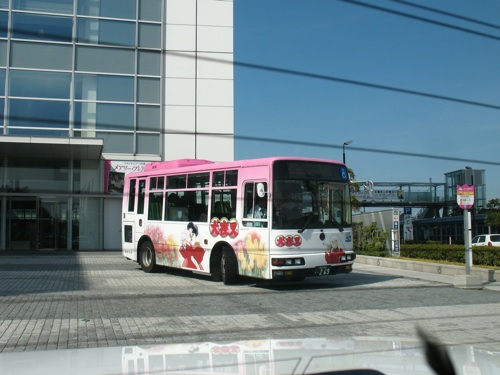Yes, really.
Via.
Just saw this, and wanted to share: there is a new world record for the largest dance done by a group of mascots. And of course it was done in Japan.
It seems that 141 regional and town representatives got together to try to break the record for synchronized dancing by mascots. Not sure if there’s a specific category for kawaii mascots, but… The full explanation is here.
I’m sad to say that I didn’t see Niigata’s lovable soybean-based mascots in the video, but I think I caught a glimpse of Sento-kun!
Here’s the video from Kyodo News:
Travel in Japan was an interesting experience for us from a culinary perspective, though maybe not for the typical reasons. One of us is a vegetarian (though willing to compromise when necessary, e.g., with broth), and we’re both aware enough of- and concerned enough about- the ethical issues raised by Japan’s overfishing that we deliberately didn’t consume a lot of seafood while we were there. Nevertheless, our food experience was pretty good overall. So this won’t be one of those “we ate raw item X!” posts.
So how well can vegetarians eat in Japan? Turns out, pretty well, again with the idea that there will probably be some compromise-and with the admission that we weren’t completely immersed in eating only Japanese food. One important thing to do is supplement what you can buy on the go with fruit and vegetables from grocery stores-and be prepared for really high prices (carrots, sprouts, and fruit juice seemed reasonable, though). Tofu is pretty widely available, though it’s generally more an ingredient than the main course.
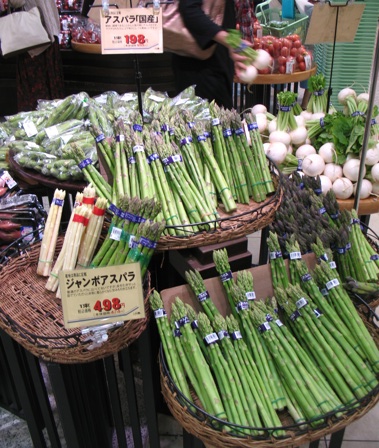
So breakfast in Japan is one of the things that we knew ahead of time what to expect. Not the traditional Japanese breakfast (rice, raw egg, miso soup, pickles, etc.), but a Westernized breakfast for people in a hurry. The main thing here: pastries.
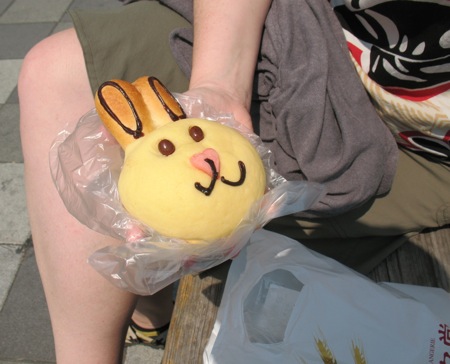
Japan is the land of awesome sweet breakfast pastries- many in the shapes of animals, some with protein in the form of beans, and others with incredibly intense green tea filling. A lot of the train stations had buns, making this a really convenient option. Grab a couple of these and a bottle of tea from a vending machine, and you’re good to go. Though finding a place to sit and eat can be a challenge- there were few benches around to sit and have a quick bite.

In Kyoto, our hostel had a breakfast buffet that we ate at twice, just to get a break from buns (yes, we probably did end up eating them too frequently overall). Our other big on-the-go breakfast option was onigiri- seaweed-wrapped rice balls with various fillings. Of course, this made for some starchy breakfasts…

Since we did a lot of walking, lunch was often on the go as well. Onigiri made an appearance there, as did a variety of other snacks. We actually ended up eating quite a few burgers, as as this vegetarian burger and pizza place in Kyoto:
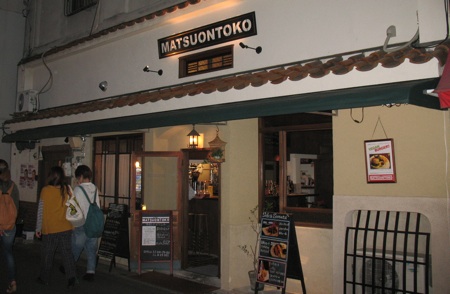
We had udon a few times, though there the broth clearly was made with meaty stock. But on cold days, it was nice to have.
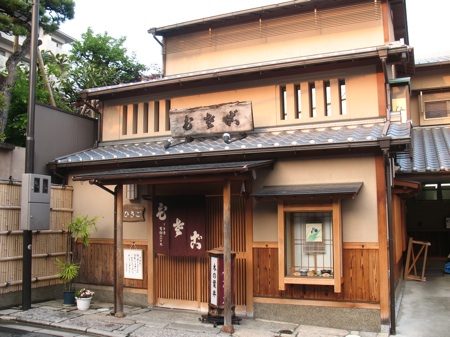
Pizza was another thing we had surprisingly often. Okay, three times in two weeks, but that’s way more often than we eat it at home. Luckily, Japanese pizza is much less heavy on cheese than American (burger patties are also much smaller). And we did get some interesting stuff, like a pizza with pickled vegetables and sake lees (the sweet leftovers from making sake). So we at least had some Japanese fusion food that time.

We did have sushi with fish twice at restaurants, and picked up some rolls with cucumber and plum paste to go at department stores twice for lunch. Department stores in Japan are an interesting experience, if only for the food options that many of them have- generally both sit-down restaurants and deli places (though again, the lack of seating is an issue with the latter). Shopping at outdoor markets is also an option.

Generally, our biggest meal of the day was dinner. This is probably a result of our travel style more than anything else. Overall, Kyoto was much more accessible both in terms of the variety of restaurants (again, one vegetarian and both staying generally away from seafood) and the availability of English-language menus (or at least menus with pictures). In Kyoto, we found a falafel place that was good, as well as this mostly-vegetarian buffet that was pricey but had a huge variety of delicious vegetable-containing options (and brown rice!):
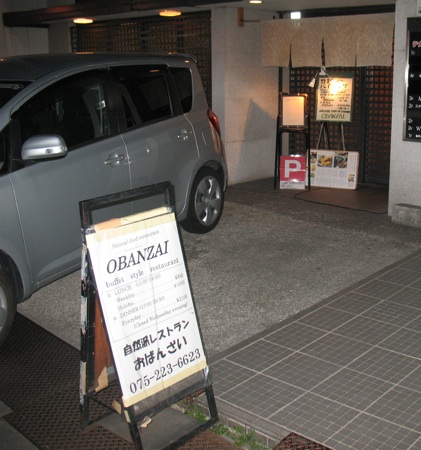
As I mentioned before, there were a lot of green tea products to try. One of our favorites was green tea custard, which we sampled just across the street from Ginkaku-ji in Higashiyama.
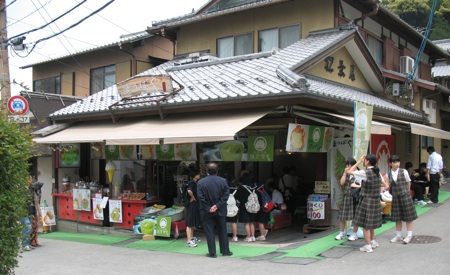
Another place we didn’t sample, in Tokyo’s Harajuku district, was the oddly-named “Grom,” which seemed to be a liberal establishment 🙂

My actual destination on my last day in Niigata was the park surrounding Hakusan Shrine in the historic area of the city. I think Hakusan is the main shrine of the city- it was certainly large and had quite a few visitors. In guide books that mention Niigata (and many do not), this area is mentioned as one of the attractions worth visiting. It was certainly a nice area.
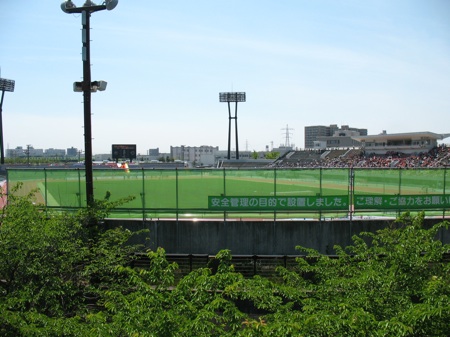
Before getting to the park, I walked along the river to the city athletic complex. There was a soccer game just starting at the stadium; probably not their pro men’s team, since they play at the Big Swan Stadium a few km away. I was able to get a glimpse onto the field from a walk bridge nearby, but the players weren’t on the field yet. So I headed on to the shrine.
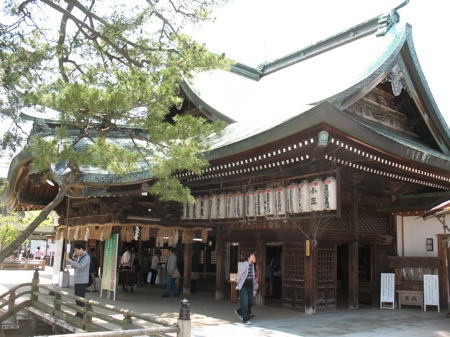
Hakusan Shrine was certainly older than Gokaku, and was also a bit more picturesque.
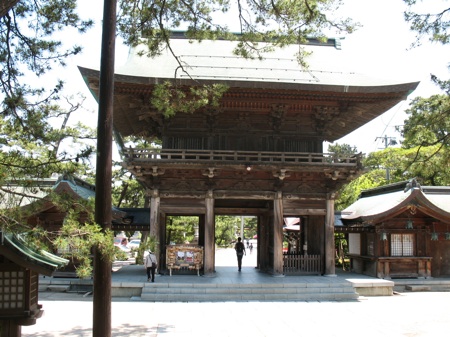
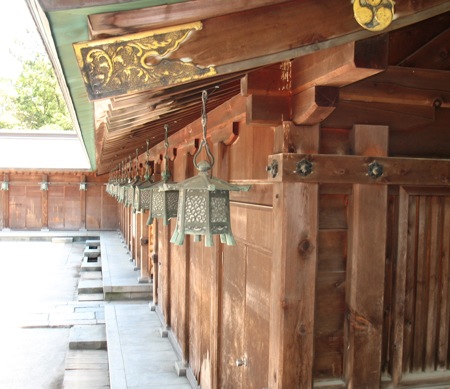
There were some nice large pine trees throughout the grounds. It’s always good to see large trees in a city setting.
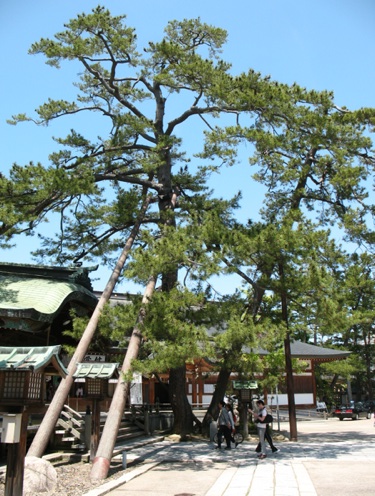
The park surrounding the shrine had a cute little pond and some landscaping.
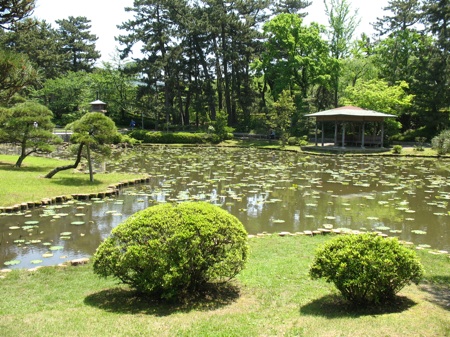
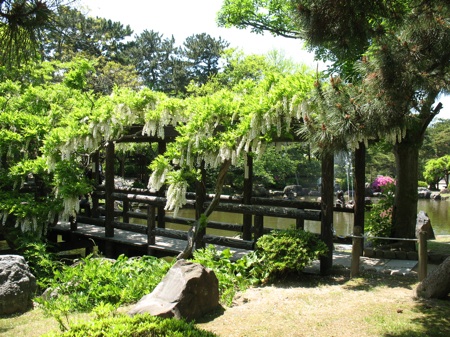
There were quite a few memorials to prominent historical figures and events. Since this area was the historical center of town, that made sense.
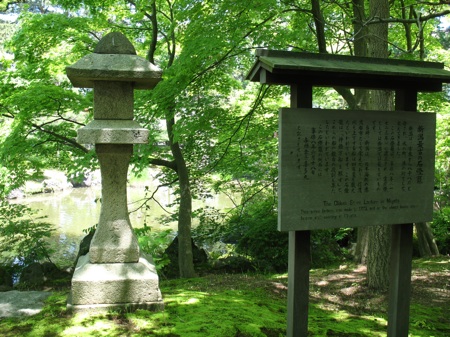
On the way out of the park, I passed by one of the historical buildings (I forgot which one) on a pedestrian overpass. Niigata seems to be quite fond of the things- certainly in comparison to Kyoto.
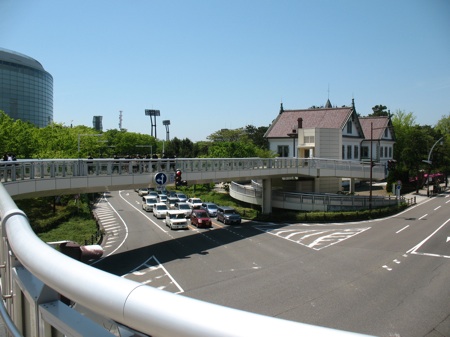
So that was my short visit to historical Niigata. There are definitely sights and buildings that I did not see, but I was able to see some interesting sights in and around what’s often called merely a stopping-off point for travelers to Sado Island. I don’t know that I’d choose to visit again just for the sake of visiting, but I did enjoy myself.
On our last day in Niigata, I took a walk along the Shinano River to sightsee. It was nice and sunny- a pretty day, in contrast to the drizzly weather we’d been having on this final part of our trip to Japan.

In the morning, we checked out of our hotel, stashed our luggage at the train station luggage lockers, and bought some breakfast pastries. We ate these in the park near the Toki Messe convention center, enjoying the pleasant morning.
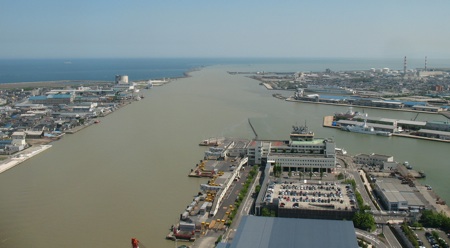
Before Yan went to his final day of meetings, we popped up to the observation deck at the top of the convention center. We took some photos of town and then became acquainted with the local food mascots- soybean-based crackers. It’s traditional in Japan for different regions to have food specialties, and today it’s pretty common for that to be taken to extremes- the Befco twins (who knows what their true relationship backstory is, though) are apparently the mascots of the convention center itself.
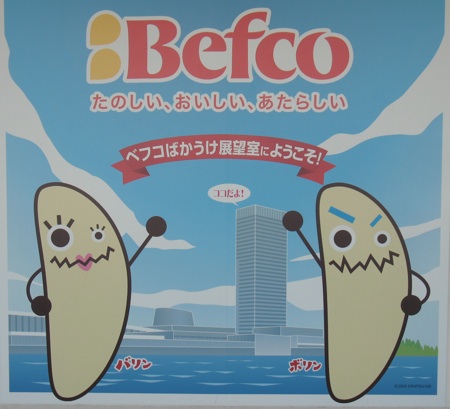
I’ve mentioned before that the area around the Shinano River is built on fill. Because of liquefaction during the last major earthquake, a lot of the most vulnerable area along the river bank is now a public park. There was a large sign in Japanese, Russian, and English in the park explaining that the bank was graded at angles that supposedly will help protect the surrounding buildings when another quake strikes. Even though the park was part of the city’s earthquake defenses, it was still a pretty place to walk.
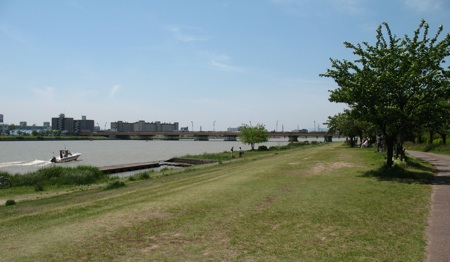
Along the way, I encountered an interesting public art installation-or so I gathered-that seemed to be part of the city’s summer cultural events.
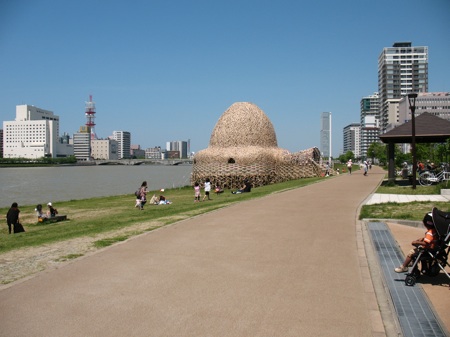
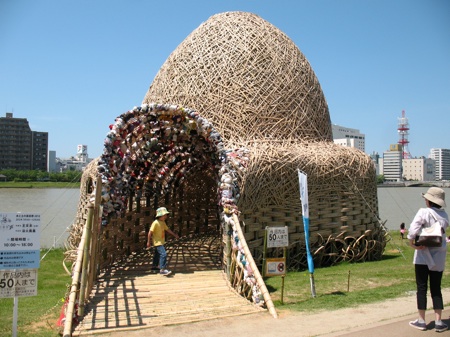
It was a large hut made of bamboo that you could walk into- so I did. The entire structure was woven from bamboo. It was a little disconcerting to be walking on the thin wooden slats as they crackled underfoot and I could see the ground fairly far beneath me. But it was definitely an interesting experience.

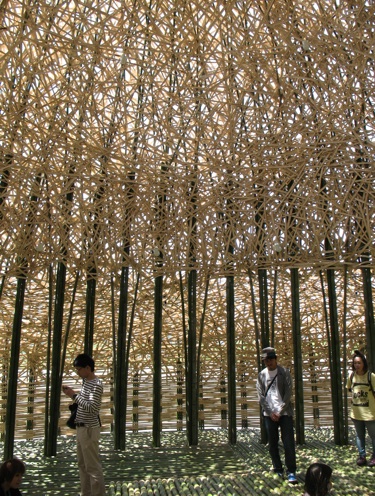
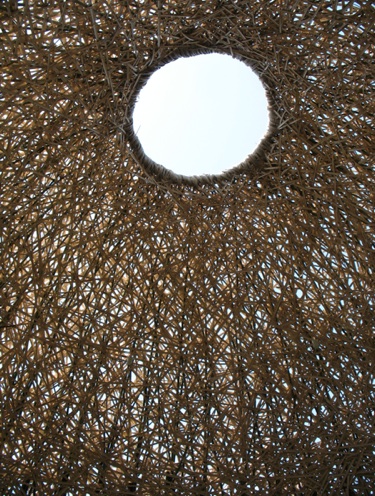
Probably the most unexpected thing I saw on my walk-even odder than the Befco crackers or the Inu-Yasha bus-I spotted in a shopping center hallway while looking for a place to grab lunch. It was a sort-of Andy Warhol-styled poster of King David Kalākaua. I’m still not sure what to make of it:
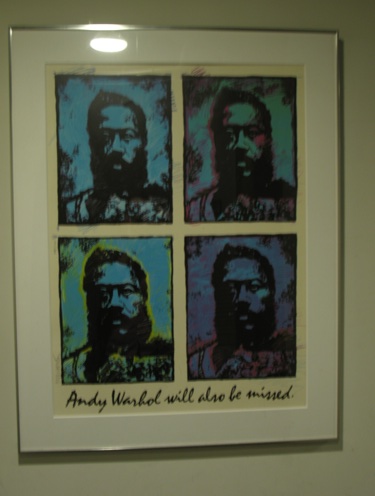
On one of the days we were in Niigata, I took the train to Echigo-Yuzawa, an onsen/ski resort town, to sightsee and try some birding. Skiing and hot springs are the big draws here, and I wasn’t partaking of either. The place I’d been intending to go- Yuzawa Kogen– is a ski resort, and in the summers you can buy a ticket up their ropeway and walk around in an alpine park.
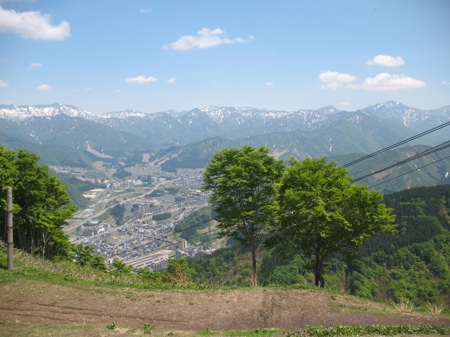
Their brochure showed a number of hiking trails- suggestive of a good chance to do some birding. From the website, they seemed to also have kiddie attractions, like go-carts and a small zipline, so I wasn’t sure what the situation would be for birds. But I went anyway, and had a pretty good time (though saw very few birds- if you are more mobile, there are better places in the Japanese Alps for it).
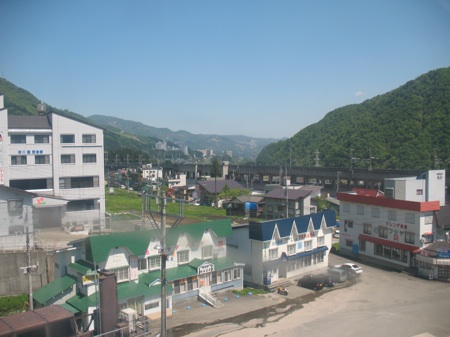
After getting up on the ropeway and walking around a bit (and it was quite steep, even though there was a plateau up there), it transpired that the hiking trails were closed, presumably because of lingering snow. That was disappointing. But I walked over to their “alpine garden” and looked at the sights: a pond and some early flowers. There were a lot of frogs croaking and what looked like egg casings in the water.
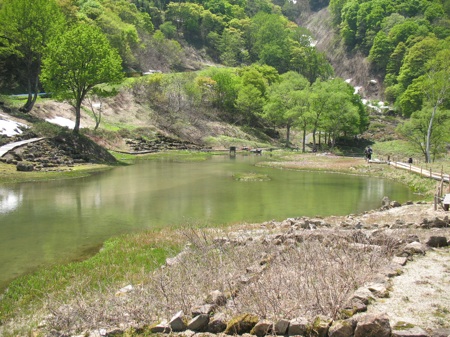
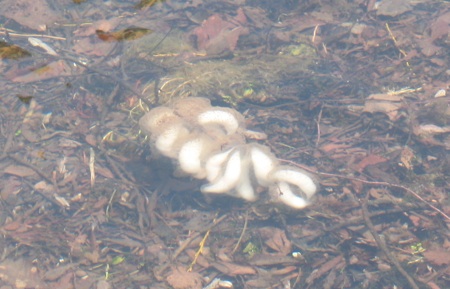
The garden itself would clearly be pretty in a few more weeks – at the time, only a few things were blooming or even much above ground.
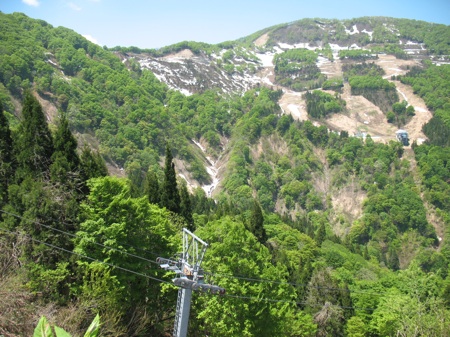
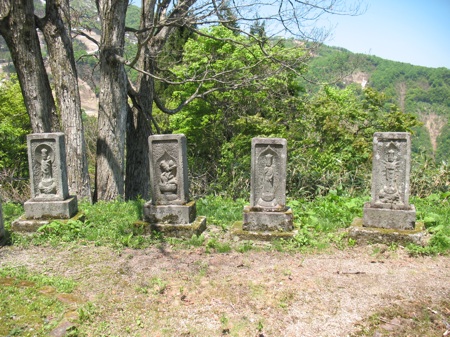
I toodled around for a while, having little success with birds (most were staying in the trees, where the trails were blocked off) and taking some photos.
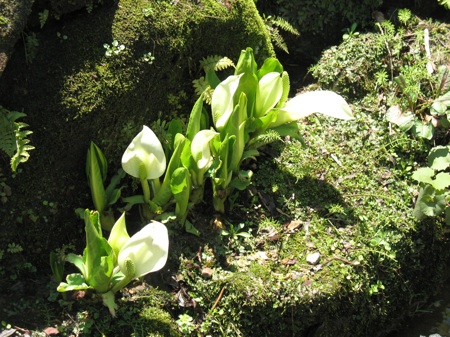
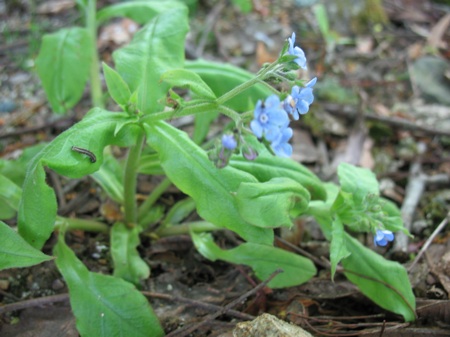
The peak above the plateau area (where I wasn’t allowed to hike) was listed on the map as being over 2600 meters high; I’d estimate that I was at about 1800 meters on the plateau.
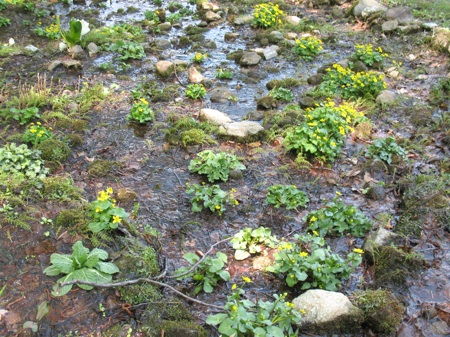
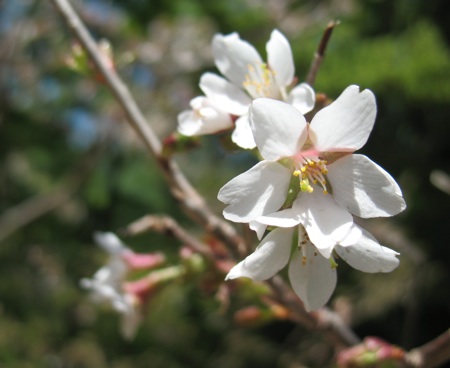
I eventually went back down the ropeway. I’d noticed a trail to a waterfall- Fudootaki Falls- marked on the tourist map I’d picked up, and hoped that might be a better place for birds.
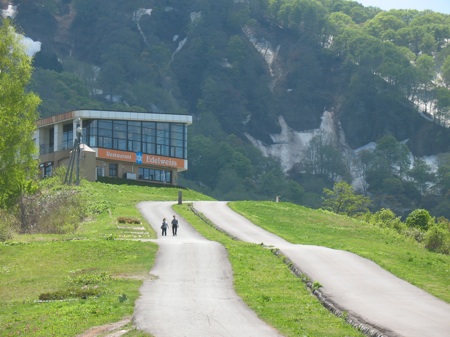
I stopped for lunch first at a burger place (teriyaki burger set) before heading up to the waterfall. It was a good thing, because the path up to the waterfall had a pretty consistent uphill grade. Along the way, it passed through a residential area, where the sound of rushing water was apparent – really, it was apparent all through the town. The snowmelt was filling the storm drains, and in places the drains were overflowing somewhat, though the water didn’t look dirty. So water was definitely a theme in Echigo-Yuzawa.
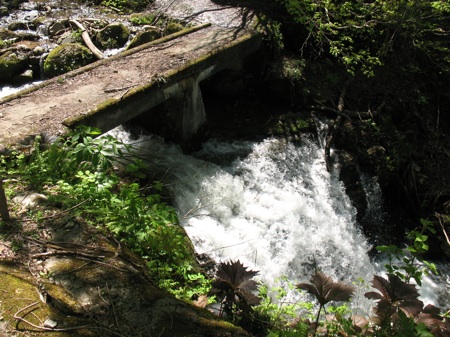
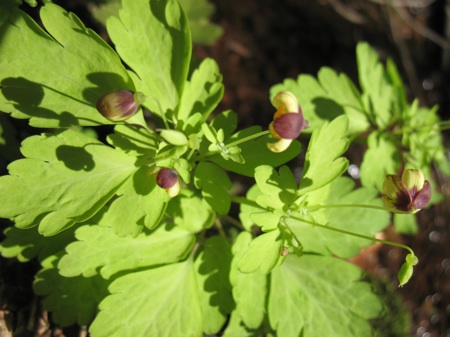
Anyway, fortified by burger and fries, I walked to the stream. It was tucked into a valley alongside the ridge that the ropeway goes up. There was a high dam and a park about halfway along the stream, then the pathway got a bit steeper for a while and climbed the valley wall overlooking the stream.
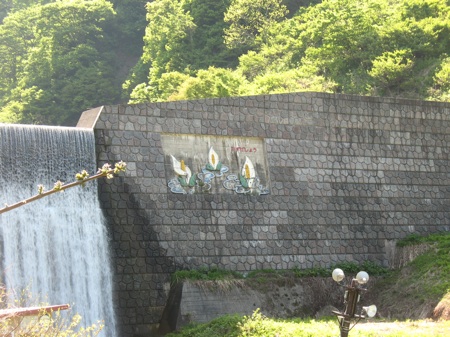
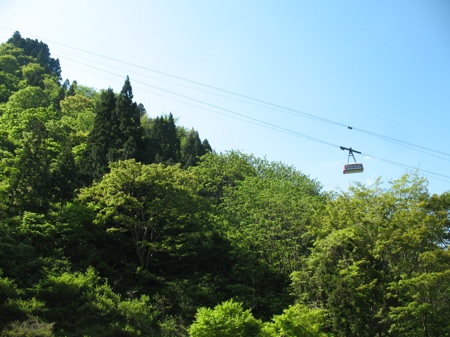
Along the way up, there was an older couple who were also doing the hike. I think the woman saw me looking at the dam and assumed I didn’t realize it was the waterfall, because she beckoned me on up the path. The same thing happened when I was checking out the first cascade, which was apparently smaller than the big waterfall – she asked if I spoke Japanese, I said no, and she tried to explain that the bigger waterfall was still ahead. Rather than try to explain that I knew the big one was deeper in the valley, I went ahead and followed them up. There were actually quite a few wildflowers blooming along the path too.
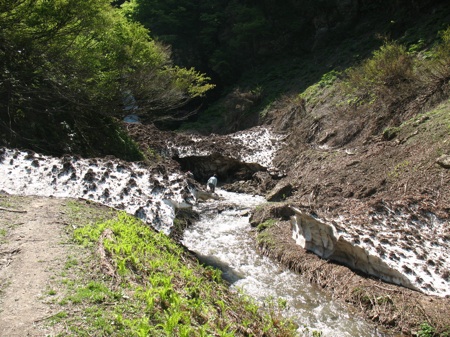
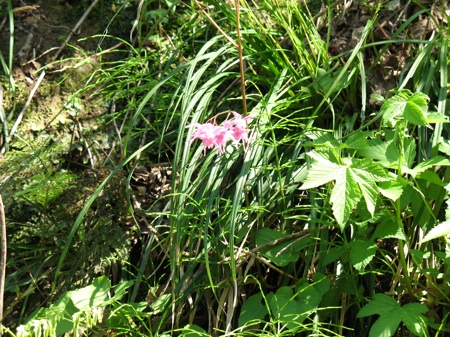
It was clear that the path had only been passable for a little while – the older man busied himself breaking some branches of trees that had fallen onto the trail, probably over the winter. The walls of the valley were steep enough that I bet landslides would be a problem. In some places, there were still deposits of dirty snow with lots of plant matter mixed in with it – even over the lower part of the stream, where there was a bit of an open-ceiling tunnel effect. But it was actually pleasantly warm.
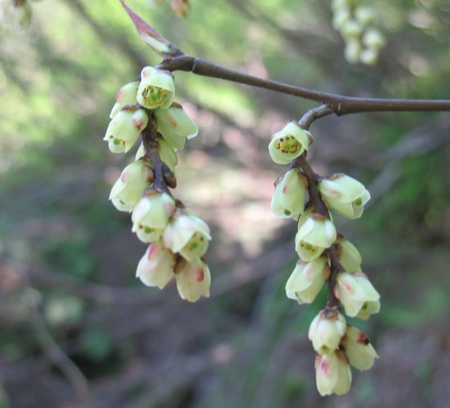
So at the big waterfall, which was back in the V of the head of the valley, there was a rock wall with water dripping down it and liverworts and mosses, alongside a small water basin with a cup. I did drink a bit of the water. The waterfall itself wasn’t super big, but was very pretty. It was quite misty because of the force of the snowmelt, and there were a lot of small flying bugs around, sort of glinting prettily in the light. So it was a pretty cool sight. It was clear that with the spring snowmelt you couldn’t get as close to the falls as maybe during the summer. I hung out for just a bit, then headed back down.
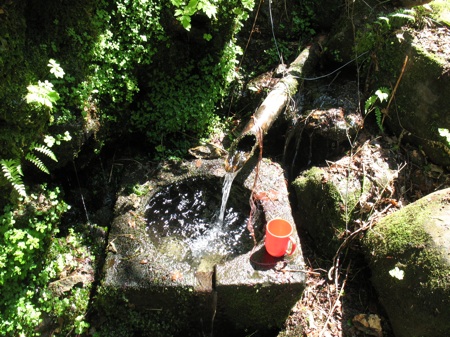
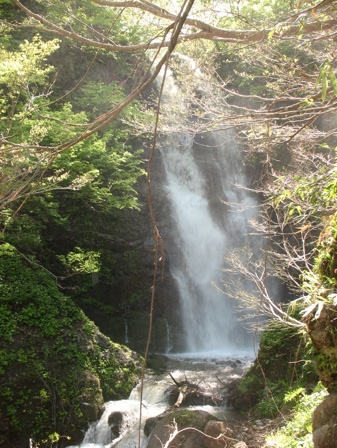
Along the way, I saw a dipper-the avian kind– which I’d been wanting to see for some time. Dippers are cute chubby birds, not particularly graceful fliers. This one wasn’t “dipping” in the water (which is where they get their name), but stayed visible enough that it was clear what it was. So that was neat.
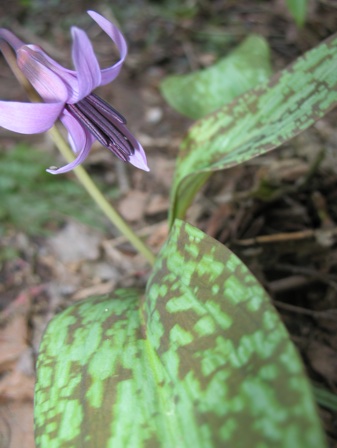
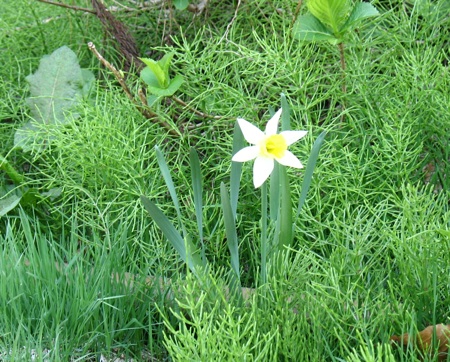
It was about 2 at that point, and I was a bit tired. I walked through town a bit. The train tracks were pretty far overhead part of the town because of the steep terrain, and it was interesting to see that houses were built under them. This reminded me of many Final Fantasy games, where there’s a similar urban setup – not something I’d encountered in the US where space isn’t generally a premium.
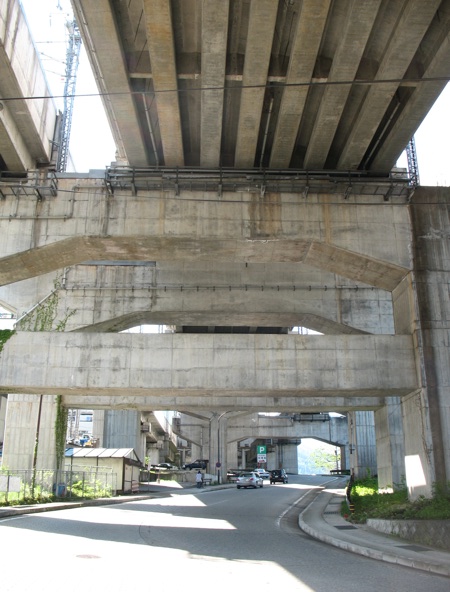
I caught a train back to Niigata around 3:15 or so, and managed to find a seat. I must have dozed off, because while I thought I was paying attention to the station announcements, I thought the next was for Nagaoka (which came before Niigata), before being alerted to the fact that it was actually Niigata by the slightly different announcement and the rustling of everyone who was preparing to leave. Maybe it’s lucky that my stop was at the end of the line!
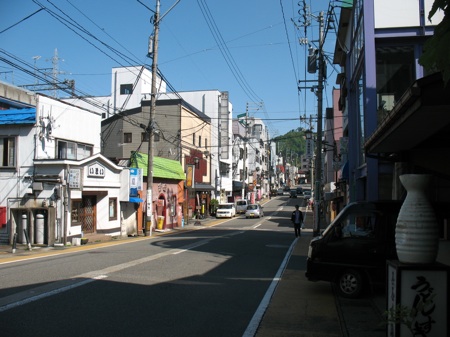
On one of the days we were in Niigata, Yan had a half-day at the conference. I spent the morning trying to figure out how to do laundry, and finally succeeded thanks to a very nice cleaning lady who found me struggling and helped me. (As a side note: if you plan to do laundry in Japan and don’t read kanji, you may want to check to see whether your phrase book can help you with this ahead of time.)
While it was pretty drizzly out, Yan and I decided to walk around town. We headed across the Bandai Bridge toward the Sea of Japan, through downtown Niigata. This area is quite low, topographically speaking. In fact, the major streets are named for the canals that used to run through here a few centuries ago. Much of the area is essentially fill, which can’t be good when big earthquakes occur.
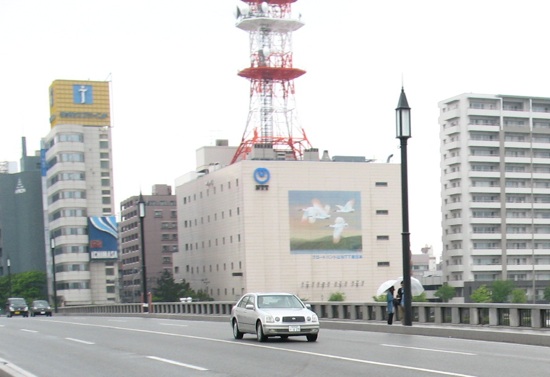
Downtown Niigata is essentially on a peninsula- the Shinano River separates the two built-up sections of town. There are some hills- actually, old sand dunes- along the shoreline. Part of this dune area is a park, so we walked there for a while.

One of the parts of the park-like area is called the “Dune of Literature.” I think this is related to an author or poet who used to come here for inspiration.

It was rather a nice place to take a stroll, and look for birds.
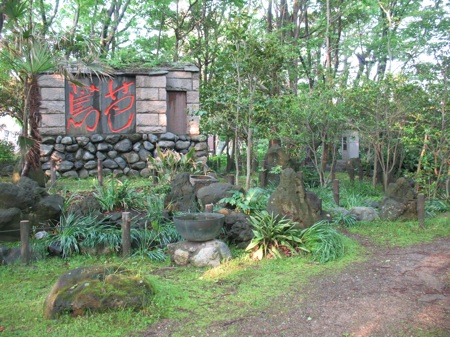
The beach itself wasn’t very scenic. Grey sand, lots of breakwaters and jetties. We assume this is for tsunami protection. We sat by the water for a bit, and made sure to dip our toes into the Sea of Japan.
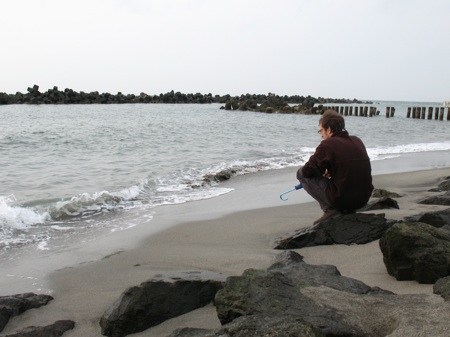
We tried to get a glimpse of Sado Island, which lies some distance off shore. But it was too overcast, and we probably didn’t have enough height to see it. Ah, well.
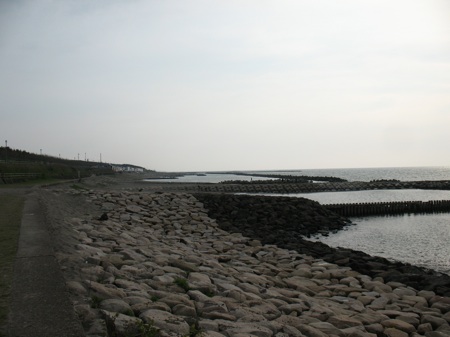
On the way back to town, we stopped briefly at Gokaku Shrine. This modern temple was an interesting contrast to all the older sights we’d seen in Kyoto recently. Definitely more recently built, and in a pretty setting.
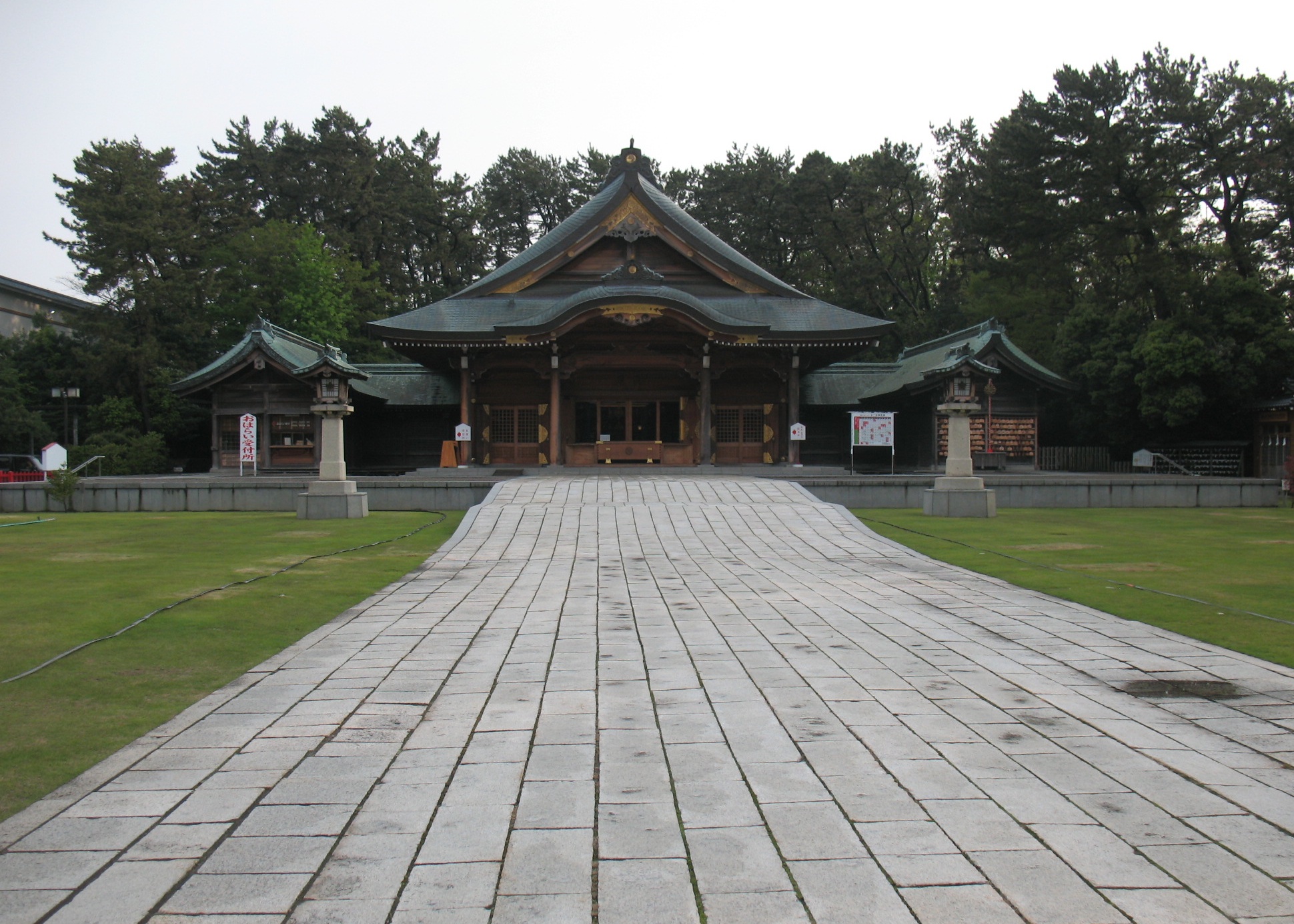
Armed with window seat reservations for the 9 a.m. shinkansen, I headed from Niigata to Ueno Park. The park is literally across the street from Ueno station (though navigating the station itself was a pain), so I reasoned that it would be fairly easy to get around. That turned out to be true, after leaving the station.
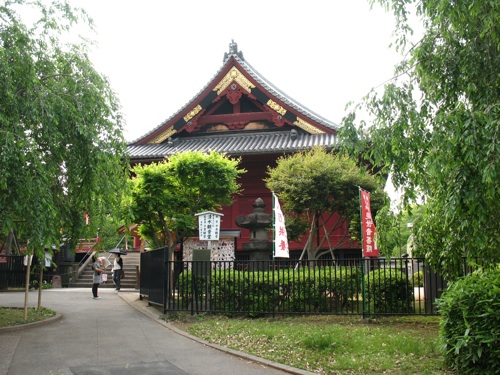
I went to two museums- a natural history museum and the national art museum. The former was larger than expected, and the latter smaller (though one of the buildings was closed for repairs related to last year’s Sendai quake). In a somewhat ironic gesture, the National Museum of Nature and Science has a giant whale sculpture in front of it (which, of course, I did not take a photo of). Though I suppose it’s fitting with the reasoning that Japanese whale hunting is conducted for supposedly scientific purposes…
The museum itself has two buildings: the entry (which is older) has exhibits on Japanese flora, fauna, and ecology, Japanese contributions to science, and a special exhibit on photography of skeletons of Ainu and Yayoi (indigenous and prehistoric peoples of Japan, respectively). While the signage in English was very limited, the arrangement of many of these things was standard, and knowing some scientific names also helped (yay, use of Latin!).
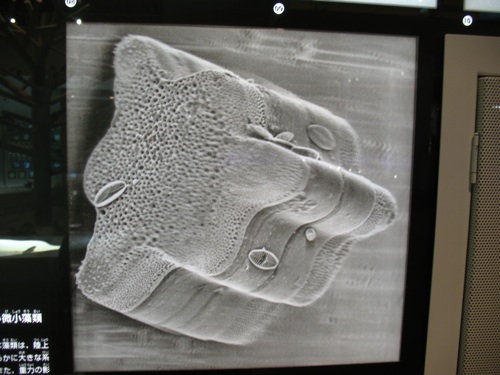
The Japanese science exhibit had quite a few telescopes, maps (including celestial maps and globes), globes, and microscopes, but signage was really mostly in Japanese. Dates were also given according to the Japanese calendar, which is based on imperial dynasties – which made interpretation harder for me.
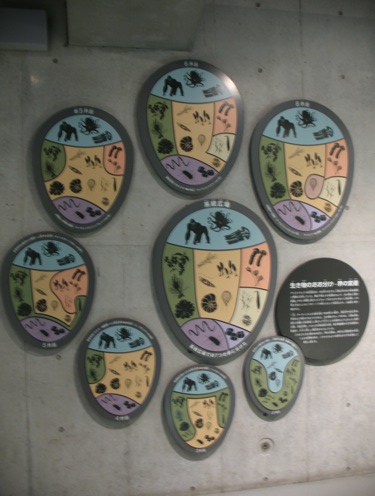
The other, newer building had more general exhibits: one big area highlighting ecological diversity, another emphasizing evolution, fossils and geological time (with a display on human evolution that had a signed photo from the Hokule’a crew!) This section was much easier for me to appreciate, because the focus here was on a familiar topic. There was also a floor that had an interactive kids’ area, and another that focused on physical sciences – chemistry, astronomy, and physics. There was no English signage on this floor, so I basically just walked through it. I did make out a big see-through lucite H-R diagram, and a display on SI units (how much volume does one mole of oxygen take up, that sort of thing).
There seemed to be quite a few middle-school kids around, on field trips, but few unattached adults. Until I got to the gift shop. That had lots of people. They did have some stuffed Cambrian-era critters which I was really temped to buy, but I couldn’t figure out what I’d do with one of them. There also were vending machines – the kind you put a coin into and then take a chance on what trinket you’ll get out – with a really cute toki statuette. But I reasoned that my chances of getting the toki were only 5:1, and I’d probably wind up getting something lame like a model of the museum, so I passed.
I also passed on the cafeteria, reasoning that there would be something to eat at the art museum for lunch that was better (I was also really trying to avoid curry rice), but that turned out to be a mistake. Both art museum cafeterias were sit-down, and there was a long line of retirees with their names on a list outside each one. So no lunch there. But I did not know this yet, so headed over there.
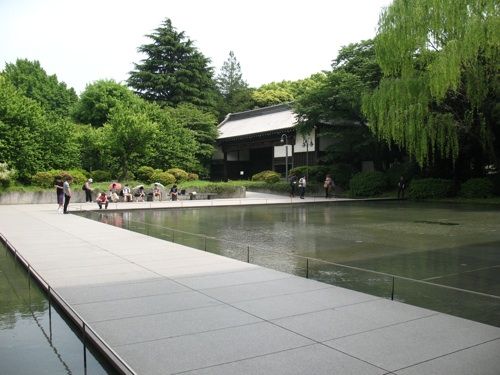
So the Tokyo National Museum was smaller than I expected, but did give a good introduction to a variety of Japanese arts. Unfortunately, I was hungry and a bit footsore at this point. There were various statues and temple bronzes (a bit anticlimactic after being in Kyoto, where these things were still being venerated in their traditional contexts), paintings and scrolls, pottery, woodblock prints, and kimono. One of the giant folding screen paintings – several yards long and perhaps 2 yards high- was quite impressive, of Mt. Fuji, surrounded by clouds, with a gold leaf background.
I finally broke down and bought a mystery item from one of the vending machines. It turned out to be a pot with a face on it from the Yayoi period. One of the things I was most excited about seeing at the museum was the exhibit with prehistoric (to historic) artifacts. This included pottery from the Jomon and Yayoi periods, as well as more recent stuff. There were some terra-cotta statues from burial tumuli from the Nara region, which was cool, though I didn’t remember the name of the tomb we saw and whether any of the artifacts were from it. After having seen these things, I decided to go back to the gift shop and buy a set of mini prehistoric terra-cotta figurines. These included two haniwa dancers, as well as a bell, and a few human figures, etc. Though there wasn’t a pot, so I felt a bit better about spending 400 yen on the plastic vending machine figurine of chance.

At this point, I think it was about 2:00, and I was really quite hungry. I looked around the park for cafes, and again most of what was there was sit-down, with long lines. I eventually wandered downhill toward the pond, and found a place to buy food – you paid first at a vending machine, then got a ticket to take to the counter and order. But as at Fukushimagata, I was approached by a somewhat weird guy who decided to try to chat with me (though in English) as I was contemplating what to get from the vending machine. His girlfriend also showed up, and I told them to order first, and pretended to be indecisive. I wonder how many of these interactions Yan and I missed as a couple, compared to as solo travelers…
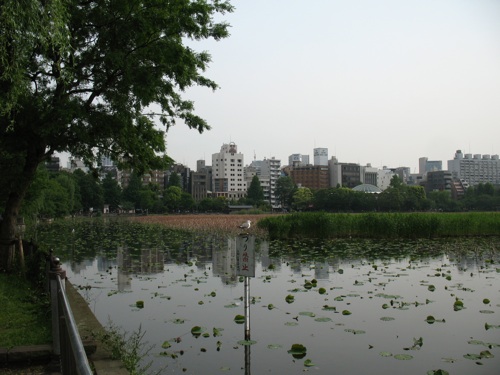
So I ended up getting fried saimin (complete with dried fish flakes) and sitting by the pond for a while. At this point, it was only about 3, and my train wasn’t till 4:30. I did a bit more wandering, and then went to the Hanazono-Inari shrine. I wanted to buy a little charm, but through miscommunication the priestess ran up to their other office to get two of the little fox figurines. They were 3000 yen, but at that point I sort of wanted them, so I bought them. My bag was getting pretty heavy…
Other sights in Ueno Park included quite a few homeless people (this seems to be where they congregate), some Peruvians selling Andean music, and a baseball game being played. Pretty footsore, I caught the train back to Niigata. A long day, but some interesting sights.
One of my day trips out of Niigata was to the Fukushimagata wetlands for birding. Fukushimagata is a park a bit northeast of Niigata City that provides habitat for birds- large numbers of waterfowl visit on migration and in the winter, but I was there at an “off” season and only saw a few species.
I headed on a local train east to the town of Toyosaka, getting there mid-morning. Toyosaka has clearly seen somewhat better days, to judge from the state of the downtown shopping arcade area. At any rate, I walked to the Fukushimagata wetlands, which are surrounded by rice fields just southeast of town. Many of the paddies had clearly been planted recently, and some of them had people in them planting. There were not too many birds in and around the paddies- Japan is not really a “birdy” place. This is probably partly due to the seasons, though.
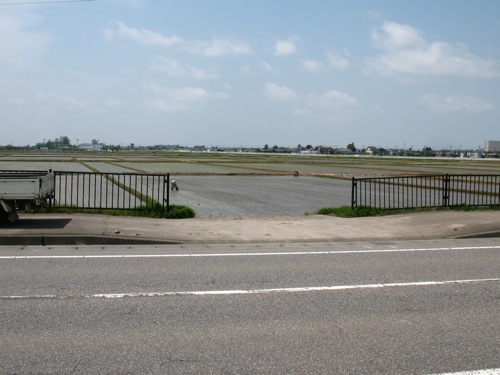
I’d originally thought that the distance from the station to the wetlands was about 1 km, but it turned out to be more like 4. So the walk was a lot longer than expected. In retrospect, it would have been helpful to look into catching a bus. The walk turned out to be fine, through a suburban area that was in better repair than downtown Toyosaka- the houses were reminiscent of the newer developments on Central Oahu or the west side of Kauai – small houses with walls, and low flat fields right outside of the town. Though this was rice, not sugarcane.
As I was walking, I heard some really loud, croaking and buzzing birds in the reeds, but was not able to get a look at them. This was a bit frustrating. When I got to the wetland protected area, there was a river running alongside it, with a spiral-shaped observation tower/nature center, and across the street a wetland complex. I visited the river first, and heard more of the buzzy birds, but was not able to see them. The visitor center had an admission fee, so I weighed going in, before deciding against it and crossing the elevated bridge over to the wetland side.
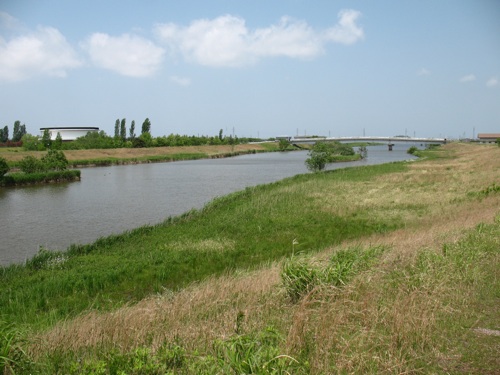
I stopped at an open teahouse/shelter building to drink some tea and eat a snack- some banana chocolate covered cookies that I’d grabbed in Niigata Station. I’d assumed there would be more food along the way, but there wasn’t much apparent in Toyosaka. But it was only 11, and I was still doing okay. A Japanese man sat next to me and tried to chat- he offered some of his lunch and I think I politely declined- but then gave me some gum. I felt a bit awkward about the encounter.
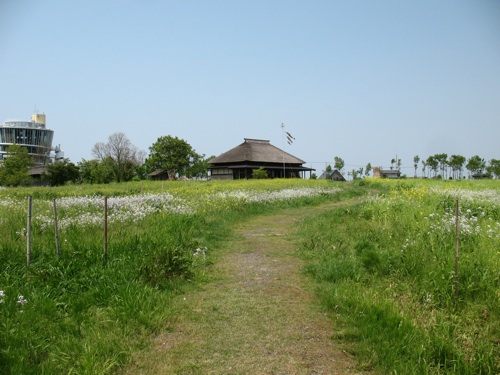
I did notice one person who looked like a birder walking along the edge of the wetlands – most of the people I saw were just out for a stroll and lacked birding paraphernalia, i.e., binocs, a vest, and a furtive manner. I walked in the opposite direction, but he ended up coming the same way I did when I was trying to identify a duck.
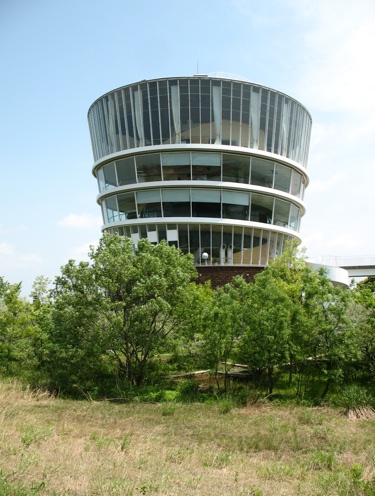
He tried to indicate something in Japanese, but I told him I didn’t speak the language. So he asked for my book and pointed to a great crested grebe (most bird books are organized according to taxonomy, so the order of species will generally be the same and it’s easy to jump to a specific group regardless of language). Apparently they’re rare at the wetland, so he was quite excited. Since that communication was more or less successful, I asked him which reed-warbler was all around (the buzzing bird), and he pointed to the right one (Great reed-warbler). Cross-cultural geeky communication FTW! Anyway, that interaction worked out better than the man trying to feed me.
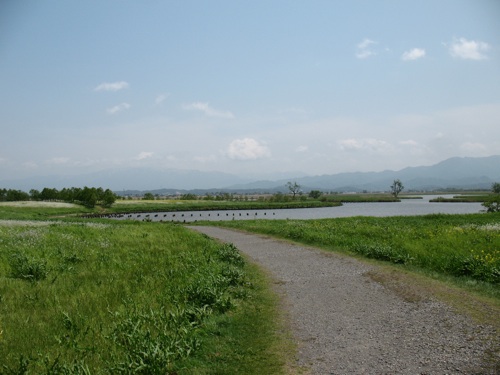
So, I proceeded on at the wetlands, visiting a viewing tower on the shore of the lagoon, and then headed back. By this point I was both tired and hungry, and wanted to rest my feet and get lunch. I also felt I would have done an honorable amount of walking by the time I got back to the station. Along the way, I passed food guy going the other way on his bike. Again, a bit awkward. But I successfully made my way back to the train station, Niigata, and onigiri and melon pastries.
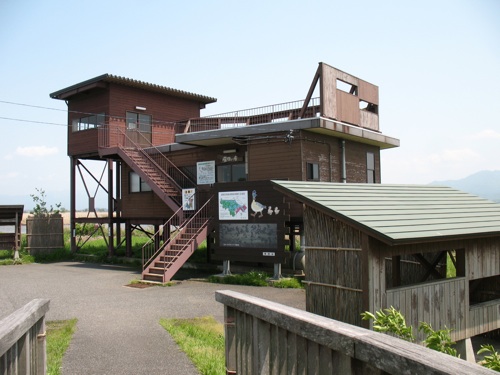
My bird list for the day:
Niigata City, capital of Niigata Prefecture, isn’t really a travel destination for foreign tourists at all, but we ended up staying there for five nights because of a conference Yan was attending. Unsurprisingly, there was a huge contrast with Kyoto in terms of Romanized signage, though there were two English-language maps at the tourist information center (one, of restaurants, was somewhat out of date).

When researching this trip, it seemed that all the guidebooks basically assumed one would just use the city as a jumping-off point to ferries to Sado-ga-Shima, the island just off the coast. So I did a lot of scrounging online for information about things to do, some of which came in handy. I thought I’d put that info here for others to reference.
The bus system worked pretty similarly to the one in Kyoto (pay at front when exiting), so that made it a bit easier, but we ended up mostly walking (which was pretty doable). There were no paper maps of the bus system available at the tourist office, but the main terminal, on the north end of the train station, has a large mural that depicts the city but routes (unfortunately, we didn’t discover this until the day before we left).
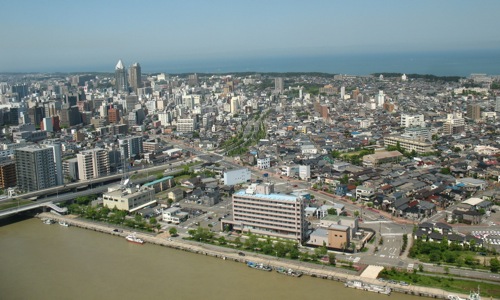
The place where our lack of ability to read Kanji was most of an issue was in restaurants. It’s much harder to be more adventurous about that sort of thing when one is a vegetarian. So we didn’t eat as well as we did in Kyoto. …I should probably rephrase that to say we did have some good food (some really excellent tofu one night, and some damn good sushi), but the language barrier created challenges.
The city is definitely grittier than Kyoto. It didn’t help that it rained off and on most of the time we were there- it sort of added to the industrial landscape. We stayed in an inexpensive business hotel, Dormy Inn, which was close to the train station and a bit over a kilometer from Yan’s meeting site. It was quite nice for the price- had an en-suite bathroom (it was also larger than the Kyoto hostel!) and two onsen on the premises (which we didn’t avail ourselves of).
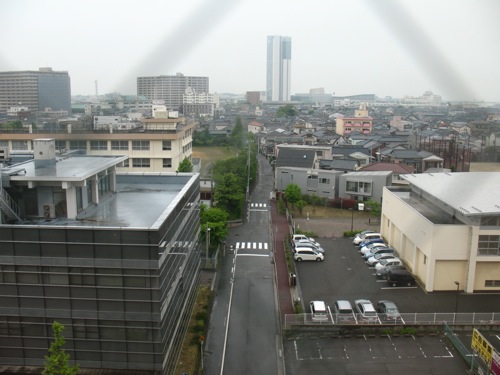
There are a few main areas of tourist interest in the city. Downtown/Bandai (between the train station and the Shinano River) contains a lot of restaurants, shopping, bars, and strip clubs. Across the Shinano River to the north is the more traditional nightlife district (possibly more upscale bars?) and what seemed to be a newer downtown area. This more northerly district historically had lots of canals; it was a port area as well as the red-light district. Today, the canals have been filled in and are now streets. It’s fairly easy to walk between and around these areas. South of the station (which we didn’t get to ) is the main pro soccer stadium and a large lagoon with parks and gardens. Much of the rest of the city is residential and industrial areas.
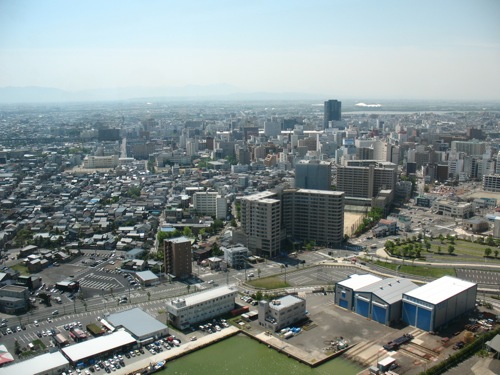
I’ll post later about two areas in the city where I took walks: along the Shinano River to Hakusan Park, and to Nishikaigan Park along the coast.
I ended up doing three day trips out of the city using my rail pass (Tokyo’s Ueno Park, Echigo-Yuzawa, and Fukushimagata Wetlands); I could probably have spent another day just wandering the city instead, but these were things I was pretty excited about seeing (more in later posts).
Things I ended up not seeing that seemed like they might be neat:
